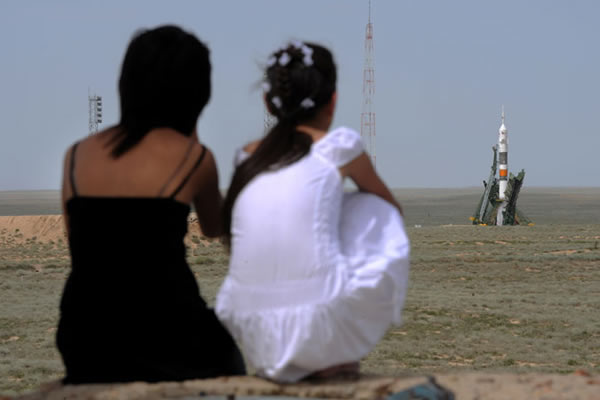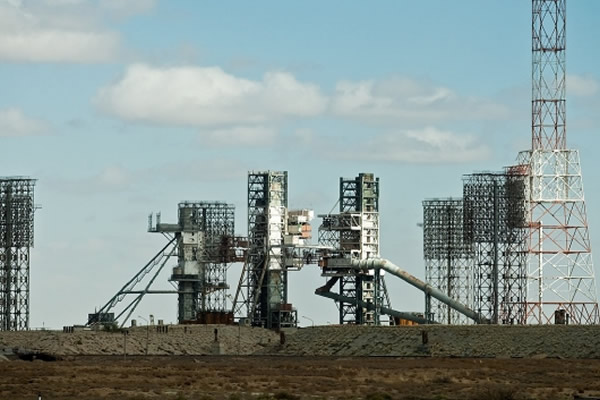
Baikonour is dying.
"Kosmograd was a dream, Colonel. A dream that failed. Like space. We have no need to be here. We have an entire world to put in order."
William Gibson, Bruce Sterling, Red Star, Winter Orbit
Starting with the launch of Sputnik, the Soviet Union used the Baikonour Cosmodrome, originally known as Kosmograd, as the launch site of virtually all of their space missions. (A few were launched from the former missile base at Plesetsk, and also Dombarovsky). Originally Baikonour was so secret that it appeared on no maps, and it was the objective of US U2 spy mission when Gary Powers was shot down in 1960.
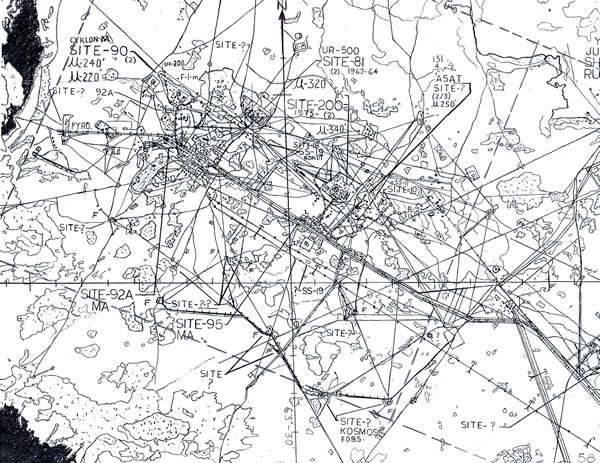
But with the break-up of the Soviet Union, Baikonour, now part of Kazakhstan, had to be leased by Russia from the Kazakh government, and suddenly looks less and less like a long term solution to the future of space exploration.
There has always been an air of decay around Baikonour, the terrain littered with abandoned launch facilities. The Soviet Union was not known for sensitive land use, with a territory so large, the overriding mentality always seemed to be to build new rather than reuse or adapt. (I'll be considering the topography of Cape Kennedy in a later post). Baikonour could be considered an experiment in distributed urbanism, a space city sprawled out over 1000s of square kilometres, connected by few roads but an extensive network of railways.
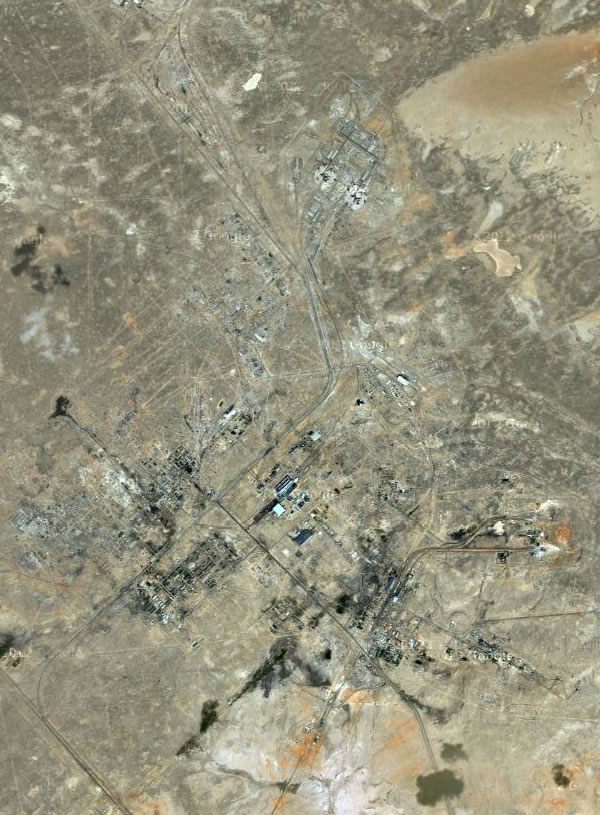
One of the most poignant symbols of the decay of Baikonour, and the Soviet dreams of space, is the collapsed hangar 112 that housed the only Buran orbiter to fly (OK-1.01). The roof of the poorly maintained building collapsed on May 12, 2002, killing 7 people, and crushing the orbiter and the Energia booster mock-up it was sitting on. With it were shattered any dreams of reviving the Buran program to fill the gap left by the cessation of the Space Shuttle program after the loss of Columbia.
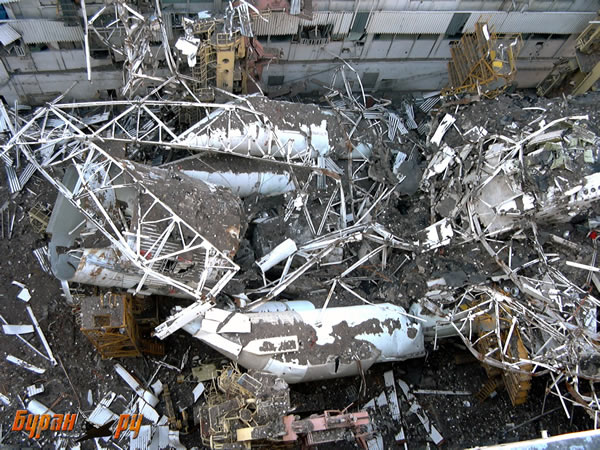
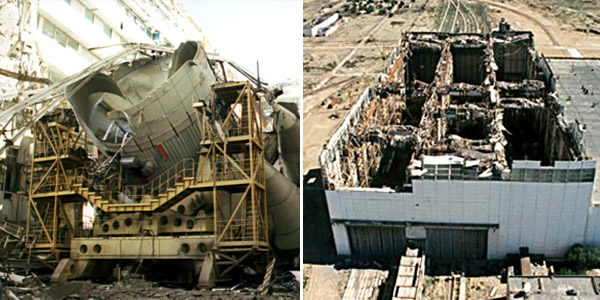
The railways were key to Baikonour's survival. The rockets that launch at Baikonour come from other parts of the former Soviet Union, from the Energia plant in Russia, or the Yuzhmash facility in Ukraine, and with cargos from around the world docked in Russian and then transported across the vast steppes.
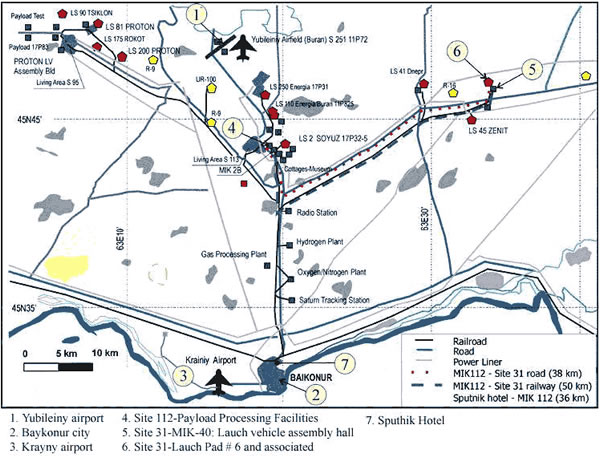
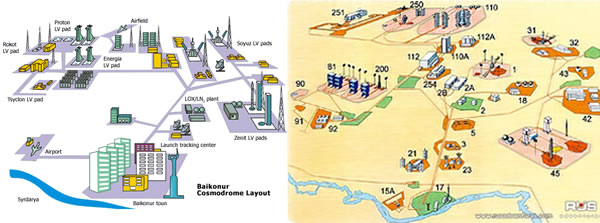
Current Soyuz-FG launches are made from LC-1, also known as Gargarin's Start, which has been used for over 400 launches since Gagarin blasted off in Vostok-1 in 1961. A powerful diesel locomotive carries the rocket to the launch platform , where it is then elevated to a vertical position, for the attachment of the launch clamps and support towers. Just prior to launch, the towers drop away, and the rocket is held above the blast pit by the four launch clamps. Finally, the engines fire, and momentarily the rocket holds there, before the clamps release and the rocket slowly lifts off. It is one of the the most transformative acts, an architecture of performance, of modernity itself.
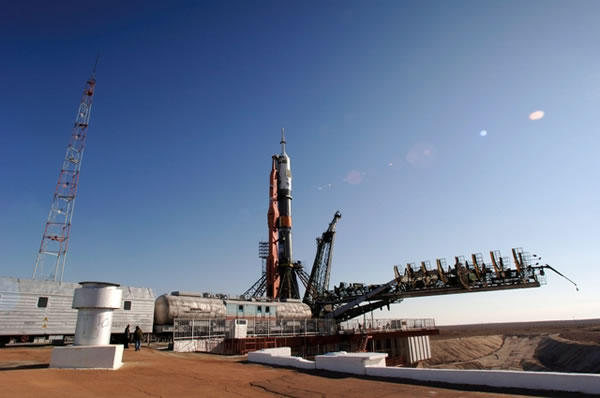
"The Soyuz looked beautiful in the floodlights, emitting wisps of frosty air from the cold metallic casing of the liquid oxygen tank. The view was deceptive. A Soviet journalist told me "if it blows up, turn around and run like hell!" The small press stand had a very thick wall behind it for protection. We heard occaisional announcements (in Russian) with major countdown milestones. Strange electronic music was played to herald new announcements. If you did not know the time of the launch, you could be having a cup of Russian tea behind the press stand and miss the whole thing! Eventually, came the call "zhaganinhee!" Engine start. The booster rumbled with a pinkish light beneath, which suddenly turned into bright gold and the engines built up to full thrust. The Soyuz seemingly hung there for ages, straining against the clamps suspending it over the flame trench. A gentle rumble turned into a continuous explosion of noise. We saw it all the way in the clear skies, with the jettison of the strap-on boosters, the shutdown and separation of the first core stage and the ignition of the second. It was a tremendous experience - the best of blast offs"
Having a decentralised space industry across the Soviet Union was fine while the union held, but upon the break-up, Roskomos' efforts to maintain an active space program, severely hampered. In December 1991 Cosmonaut Krikalev circled the Earth aboard Mir while the nation that had placed him there fell apart beneath him. While not technically stranded on Mir, (Soyuz TM-13 was docked), there was little direction coming from Moscow. Krikalev, who had arrived in May 1991, finally left Mir in March 1992, having logged 311 days in space, 6 months more than originally planned.
With the collapse of the union came the end of collaboration. Ukraine held Russia to ransom over key components such as the Kurs radio telemetry docking system, and withdrew their fleet of tracking ships. Meanwhile in Kazakhstan cargoes at Baikonour were often looted, and there were frequent power cuts across the region. In July 1993, there was a power failure half and hour before the launch of Soyuz TM-17. Ultimately this all led to the decision to abandon Mir, which was put into de-orbit on 21 March 2001.
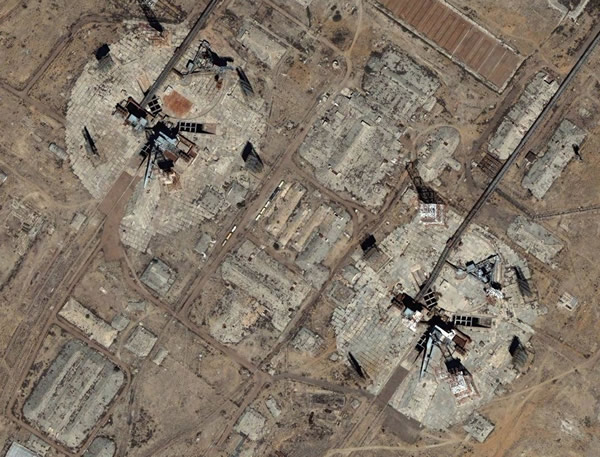
Baikonur is leased until 2050, but already plans are being made to move rocket launches to new sites. Roskosmos has already constructed a new launch facility at Kourou in French Guyana until such time that a new dedicated facility on Russian soil can be built, almost certainly at Vostochny, the former Svobodny missile base. It's likely that Kascosmos, the Kazakh space agency, may use some of the facilities, but the relatively northern latitude of Baikonour makes it less efficient for rocket launches than equatorial locations such as Kourou.
For the time being, the sight of Soyuz rockets rising over the steppe remains one of the potent reminders of the glories of the Soviet space program.
